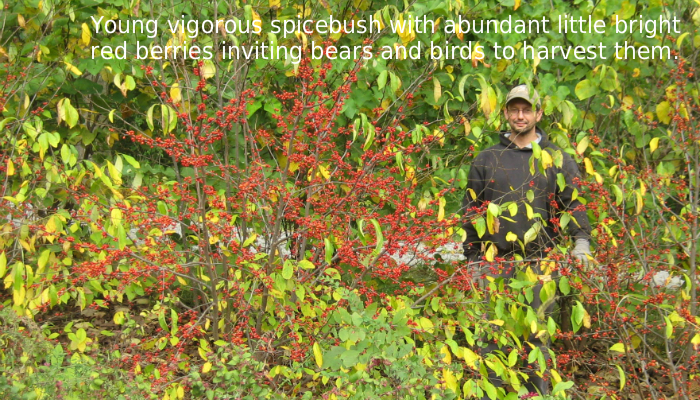Our Rare Butterfly Plantation in 2017

You may already know that back in 2010 we started developing a patch of habitat for the rarest of our native butterflies, at our homestead in western Johnson County. Today it has grown to around four acres. These butterfly species were probably uncommon 200 years ago, mostly being obligate to one or two native trees, shrubs, or vines, which are near the northwest limits of their native ranges, and today are almost entirely extirpated from the state. So the plantation consists of a planting of these uncommon species, some in full sun, some under a canopy of older oak and walnut. In 2017 there was good news and bad news.
The good news is that the planting is becoming robust and healthy:
- The pawpaws, whose leaves are the sole food for the zebra swallowtail caterpillar, now number 143 specimens and had no mortality in 2017. The oldest ones bore fruit in 2017, and we and the wildlife loved it.
- There are also now 290 spicebush. In the Appalachians, black bears will go into spicebush thickets in autumn and spend days raking off pawfuls of berries to help fatten up for winter. This year a bear would have been happy for a few days in our planting (see photo), but the birds gradually got many of them. The leaves of spicebush and sassafras are the sustenance for the spicebush swallowtail caterpillar. We also have a couple dozen sassafras, which also supply berries for birds.
- The alien honeysuckle brush I cleared for the plantation was piled in long windrows and planted to pipevine, which can scramble over and through it like a trellis. In 2017 the oldest pipevine had blanketed about a third of its windrow, the leaves of which are food for pipevine swallowtail caterpillars.
- The little patch of five hoptree shrubs continues to thrive and hopefully will become a thicket. This is one of our two native citrus, whose leaves are the sole source of food for the giant swallowtail’s caterpillars. Our other citrus is prickly ash (which is not in the ash family) and is quite widespread across eastern Iowa, where it is often under attack as a noxious thorny bush.
- About two dozen young persimmon trees were grown from seed sourced from Iowa City to south-central Illinois. One bore a heavy crop of fruit this year and several had a scattering. Several had their small upper branches extensively broken by a heavy animal clambering around for the fruit, probably a raccoon. Persimmon leaves are a favorite for the Luna moth’s caterpillar but they are not obligate to persimmon.
Now for the bad news:
- Hardly any adult rare butterflies or their caterpillars were observed in 2017 – only two spicebush swallowtail and one giant swallowtail. This is far fewer than in 2012-14, when the plantation was younger and smaller. My strong suspicion is that this is due to the greatly increased aerial spraying of insecticides on ag crops during the last several summers. Extensive drift is inevitable and even formerly semi-functional river corridors are becoming too toxic for butterflies to migrate here from northern Missouri or southwestern Illinois, where they and their food plants are more abundant, and there is less hard-core agriculture.
Other plantation details about the four-layer canopy, natural history of these rarest of the rare, etc., are in my previous annual reports. Visit: Annual Report: Lon’s Butterfly Plantation 2016 and 2015 Annual Report for Rare Butterfly/Rare Plant Project. We continue to maintain the plantation, hoping that natural repopulation of butterfly species will occur. Bur perhaps initiating transplant efforts of these butterflies will need to happen.
Tags: annual butterfly report, butterfly garden, butterfly habitat, Lon Drake

